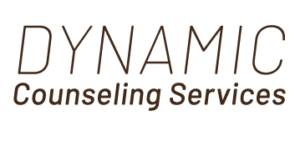Brene Brown says that human beings are hard-wired for connection, and I believe her. So what happens when people, hard wired for connection, are told to keep their distance, as we are all being told to do to help flatten the curve of the coronavirus? To stay inside and away from family and friends? To keep six feet from people they interact with in person — no hugs, kisses hello, not even handshakes?
Cacioppo and Patrick, in their book “Loneliness” extensively catalogue the physiological and psychological impacts of loneliness on human beings, and likens the feeling of loneliness to that of a hunger signal — feeling lonely is a built in trigger to tell us to go spend time with other humans, because evolutionarily speaking, we do better when we are part of a group.
“In the same way that physical pain serves as a prompt to change behavior — the pain of burning skin tells you to pull your finger away from the frying pan — loneliness developed as a stimulus to get humans to pay more attention to their social connections, and to reach out toward others, to renew frayed or broken bonds.” (Cacioppo & Patrick, 2008).
Isolation certainly can enhance the feelings of loneliness some people already experience, but this unprecendented time also comes with an opportunity to reach out and renew bonds — just in different ways than before. Technology, often the very thing that can keep people distanced and separated (as everyone focuses more on the phones in their hands than the people around them) has the possibility to bring people closer than ever.
When I moved to NYC from Los Angeles almost 10 years ago, I was very afraid that I was leaving all of my friends and family behind. Instead, I found making contact became an intentional act, and in many ways those relationships deepened. While my New York friends and I might spend weeks trying to coordinate our schedules for an in-person hang out — and wait to do all our catching up then — my West Coast friends kept up ongoing chat messages and text messages, weekly emails with updates about how we were all doing, and even coordinated virtual gaming nights and movie nights. The added negotiation of the distance meant I had to put more baseline effort into those relationships, and that in turn made it in some ways easier to stay connected with the people that physically I saw the least.
During this time of forced social isolation, that same intentional contact is more important than ever before. Using chat systems, text messages, emails, video chats, and even old-fashioned phone calls are vital ways to stay connected with people. This time of ongoing fear and uncertainty also provides an opportunity to reach out to those folks you have felt drifting away and have been wanting to reconnect with.
And, there is no shortage of online things to do with folks, as many places try to make online entertainment and socialization easier than ever:
- Watch a movie with a group online
- Play boardgames with a group online
- More ways to play board games online
- See museums, galleries, classical concerts, and operas online
- Listen to live-streaming concerts and performances
- More concerts
- And still more performances and concerts
- Watch live-stream nature webcams
- Have video-session gatherings/parties
- Participate in live-stream workout sessions
- And other, newly free fun online things to do
Also, if there was a local activity or meet up you used to do before all the social distancing, check out whether or not that group has found a way to do the same (or similar thing) online.
Finally, just because we’re in the midst of a pandemic doesn’t mean you can’t try to make new friends. Different folks at Meetup are now doing all sorts of online meetup sessions.
On a last note, if feelings of loneliness and isolation are getting to be too much and you need immediate help or feel like you are in emotional crisis, crisis hotlines are still active and available, including NYC Well, where you can talk, text, or chat with either a peer or a professional counselor.
No matter what happens, we are all in this together, and no one should have to feel lonely, even if many of us are physically alone. Reaching out to each other is the best way for everyone to get through this.
